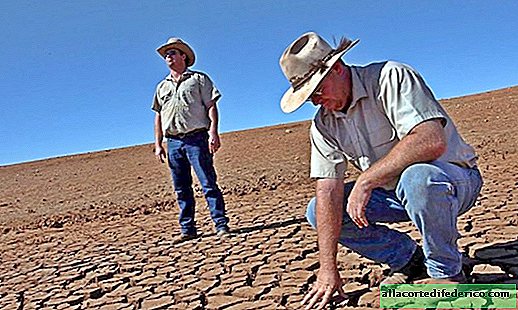Sad climatic record: Australia continues the worst drought of the century
Rivers and lakes have dried to the bottom, green pastures and crops are scorched by the scorching sun, and farmers with horror are waiting for tomorrow. This is what southeast Australia looks like today, where for several months the most severe drought in the last 100 years has been going on.

It is winter in Australia, but this fact does not affect the terrible drought that hit the states of New South Wales and Queensland in the south-east of the country. This is one of the most densely populated regions of the country where the capital of Australia is located - the city of Canberra, as well as such major cities as Sydney and Brisbane. But if urban residents are uncomfortable due to high temperatures and dusty air, then farms, which are quite a lot in these states, are actually on the verge of bankruptcy.

98% of the New South Wales state suffered from prolonged drought, where almost a quarter of the country's total agricultural crops are grown and 36% of Australia's total sheep stock is found. In addition to sheep, cattle are raised here, as well as wheat, barley, cotton and many other crops. Drought also affected 2/3 of Queensland, which is located north of New South Wales. Farmers are forced to buy food for their animals from other regions of the country to keep livestock, but prices are rising and drought continues, causing people to despair. On many farms, sheep have long gone out to pasture, and eat grain, which is bought by farmers so that animals do not die of hunger.

Most of Australia is occupied by deserts and semi-deserts. And even in New South Wales, which has become the epicenter of drought, rainfall is, at best, 250–700 mm per year. Therefore, few people can be surprised here by the high air temperatures, dust storms and the long absence of precipitation. But what has been observed over the past months in the southeast of the continent has already gone beyond the usual.
Experts note that the past 2017 was the third in terms of temperature in the entire history of meteorological observations in Australia and also had a slight rainfall. Of particular concern is the fact that this temperature anomaly is not related to El Niño, which is usually the cause of droughts on the continent, but is observed independently of it. In January, when it was midsummer in the southern hemisphere, temperature records were broken in several cities in the southeast of the country. So, for example, in Sydney on January 7, 2018, the maximum air temperature was recorded in the entire history of meteorological observations, which amounted to 47.3 ° C. Terrible heat with a stable temperature above + 35 ° C was held in this part of Australia during January and February 2018.

Australians can only hope that soon the rains will come to the south-east of the country and the terrible drought will end. But the chances for this are becoming less and less, since spring is approaching, and after it is summer, which will bring another rise in temperature.


















